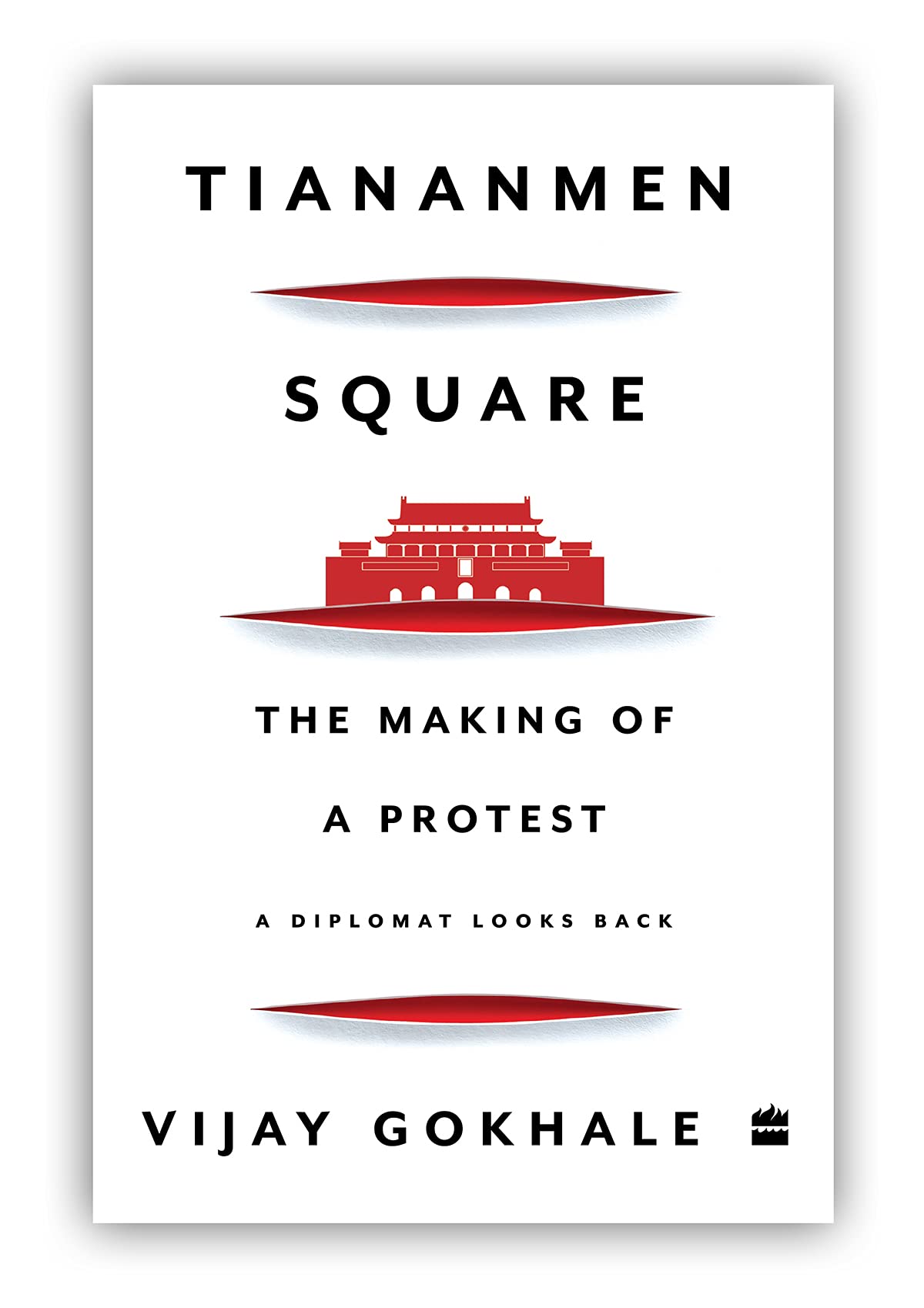
Tiananmen Square: The Making of a Protest – a diplomat looks back
Vijay Gokhale is a former Foreign Secretary of India, who served as India’s Ambassador to China and retired in January 2020. This book is his reflection of the events leading up to the student protests in the summer of 1989 popularly known as the Tiananmen Square Protests. There is surprisingly written about this tumultuous period, in part due to strong PR from the Chinese Communist Party (CCP). As Vijay Gokhale was posted as a junior officer in Indian embassy in China at the time of protest, his analysis of the incident is substantiated by a wide range of information such as declassified US government documents, The Tiananmen Papers, and other Chinese publications.
The author gives a glimpse of the structure of CCP as an organisation and its political structure. He points out the internal power struggle within CCP as the main reason for the protests. In the initial part of the book, he describes the main personalities involved – Deng Xiaoping, Zhou Ziyang, Li Peng, Hu Yaobang, among others. The book details their rise in the party to make one understand the reasons behind the internal politics. The struggle was largely between the reformist Zhou Ziyang and hardliner Li Peng.
Beyond the protests, the book elucidates how the CCP thinks – something relevant for today. Its key motivation is to maintain its superiority in China and to suppress any opposition. This drives all the major decisions on economic and foreign policy front. Gokhale mentions that the CCP was shocked at the demise of Soviet Union and undertook studies to figure out why. It concluded that Russia’s decision to allow openness (Glasnost) was the primary reason for demise and CCP vowed that they will not allow any similar means to dilute their dictatorship.
The book gives a very good analysis of the country’s broader history leading to the main incident – like founder Mao Zedong’s Great Leap Forward in 1958 towards forced collectivisation and industrialisation resulting in the world’s largest famine and the death of millions. Similarly, The Cultural Revolution in 1966 also led to unrest. There were leaders who were not in sync with Mao’s views, but none could oppose him because of loyalty to the party versus the broader country and Mao’s vindictive actions on quelling any opposition with brute force. This backdrop is important as this was repeated during 1989 protests when the CCP authorised People’s Liberation Army to suppress opposition. One can say that China is a large and diverse country which is the chattel of one party wielding the world’s largest army. As such, the loyalty of its people is towards the party rather than the country.
Since the event happened under Deng Xiaoping’s leadership, there is a lot of focus on what he thought of China’s plan to supremacy globally and his four pillars of modernisation namely – agriculture, industry, science, and defence. One of the other projects of Deng was to reform the political system in China – basically taking out corruption among the party members. However, Deng was also very careful of the fact that his reforms shouldn’t result in dilution of party’s power over the country. “For Deng, the Communist Party was always first, last and everything, and all else was subordinate to this principle.”
Gokhale also suggests a lack of understanding of Western diplomats and press in identifying the real reason behind the protests. The protests started by students were largely for basic freedoms; better job opportunities and elimination of rights to party cadres’ children – this would be quite rational in democratic countries. However, such demands which could challenge the might of CCP were looked upon as revolutionary in China. This was given a lot of weight by Western media, which was always looking upon some stories on an otherwise closed country like China. Their lack of understanding of the situation fanned it to look like a struggle for pure democracy, which wasn’t the case.
Initially, these protests were handled through negotiations and articles in the state media, as this was coinciding with Mikhail Gorbachev’s visit in the middle of May, another important project for Deng (to normalise Sino-Soviet relations). Once this was completed successfully, the CCP opted for military action and martial law was imposed in Beijing. The author mentions there is no accurate information as to what really happened on Tiananmen Square in the night of 3-4 June and how protestors were removed, and all the barricades taken out. There were reports of some firing, but there no clear count of casualties.
The author also opines that USA valued its economic interests more than the values it preaches. And in this regard, Deng Xiaoping proved to be right – post the event, he directed leadership to commit further on reforms and invest in SEZ (special economic zones). Regarding the domestic situation, Deng Xiaoping believed the underlying reasons for protests were economic not political. Therefore the solution for social instability stability was development – something that the CCP was best placed to deliver. For this, he made certain changes to political reforms so that the absolute rule of CCP in China could be preserved.
In the ending chapters, the author talks about the life of key players after the incident. Also, he speaks about student leaders and intellectuals who moved to USA and have since been forgotten by Chinese population. Since then, there has not been any such incident perhaps due to the growth in prosperity instigated by Xiaoping and a tighter stranglehold by the CCP.
This book provides a very interesting perspective on the philosophy and mind-set of the leadership of the world’s second largest economy. It gives a very good insight into its political system and society.
Saurabh Chugh
September 2021
